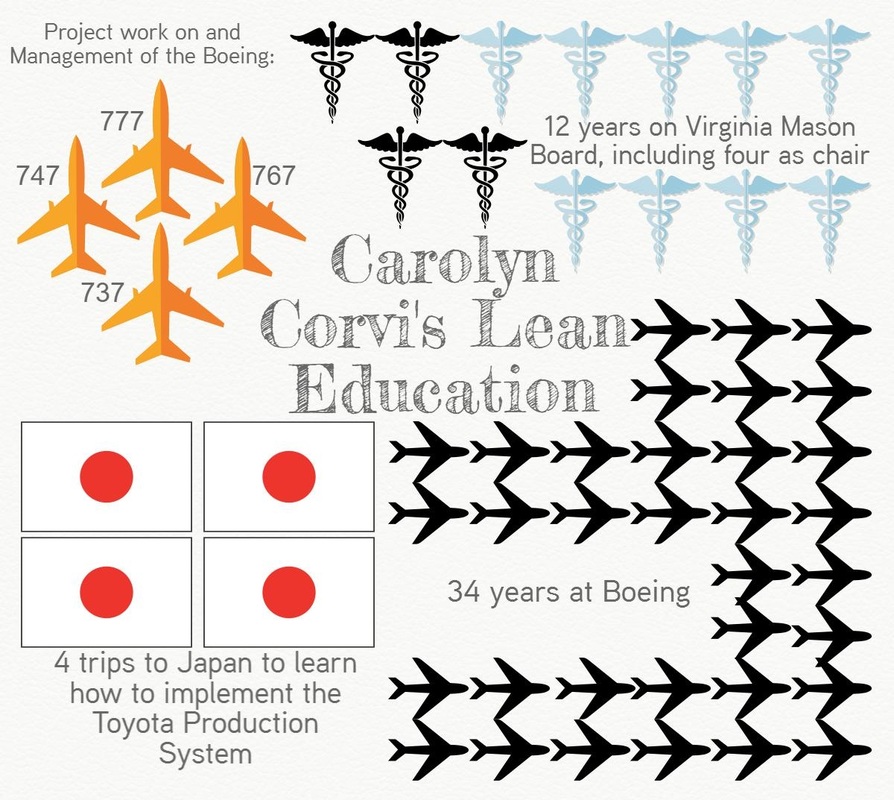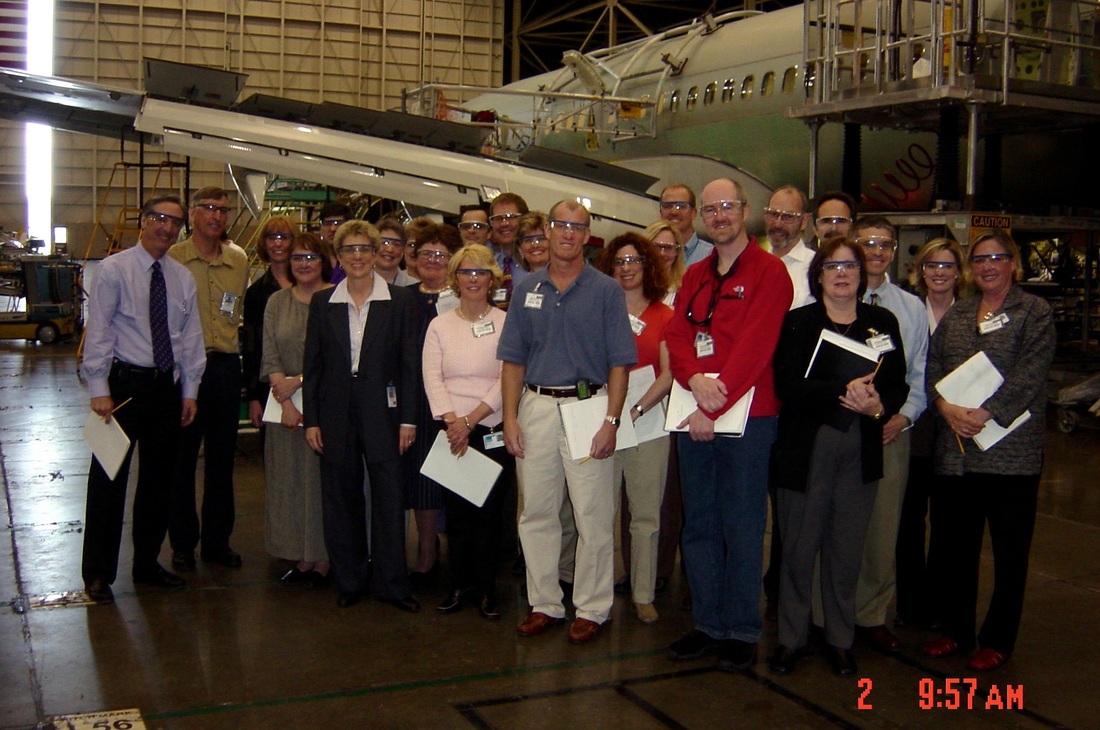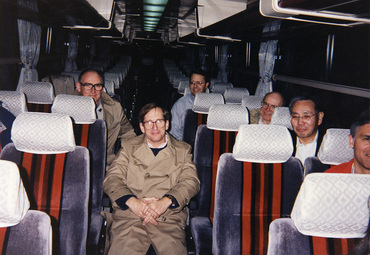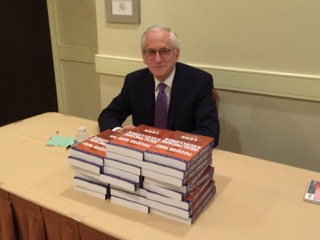Becoming a Lean leader sure doesn’t happen overnight. Lean leaders transform their listening and team-building skills to usher in eras of far-reaching and continuous improvements. Carolyn Corvi, a true example of Lean Leadership, learned her craft over many years of study and implementation of the Toyota Production System. Here’s a visual look at some of the main ingredients in her education:
Corvi’s skills are built on years and years of a passion to continuous learning.
In my opinion, history will record that Corvi took every piece, every bit, of learning as a Sloan Fellow at MIT and her trips to Japan to study the Toyota Production System and the technical advice of our Shingijutsu Sensei's and made it all happen. It was a brilliant, major breakthrough in the style and thinking of Toyota. Corvi achieved unheard of production gains of 50%, a space reduction of 40%, and a cultural shift to on-site teamwork and persistent communication. Corvi successfully addressed the antiquated separation of mechanics and manufacturing employees who were building the Boeing 373 in batch production. Since serving on the board at VMMC, she has been instrumental in ushering in similar transformations at Virginia Mason, a testament to the depth of her learning and her ability to translate the Toyota Production System’s potential for healthcare.
In my opinion, history will record that Corvi took every piece, every bit, of learning as a Sloan Fellow at MIT and her trips to Japan to study the Toyota Production System and the technical advice of our Shingijutsu Sensei's and made it all happen. It was a brilliant, major breakthrough in the style and thinking of Toyota. Corvi achieved unheard of production gains of 50%, a space reduction of 40%, and a cultural shift to on-site teamwork and persistent communication. Corvi successfully addressed the antiquated separation of mechanics and manufacturing employees who were building the Boeing 373 in batch production. Since serving on the board at VMMC, she has been instrumental in ushering in similar transformations at Virginia Mason, a testament to the depth of her learning and her ability to translate the Toyota Production System’s potential for healthcare.





 RSS Feed
RSS Feed